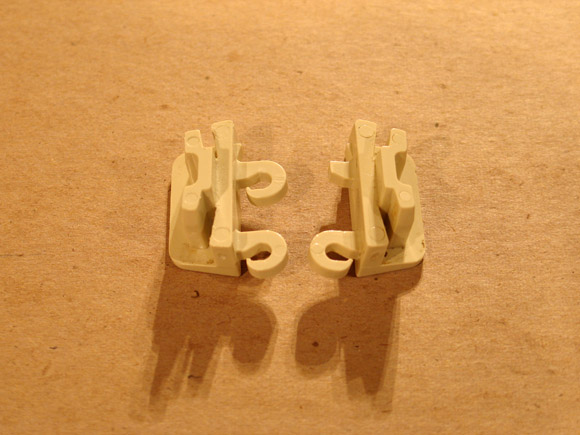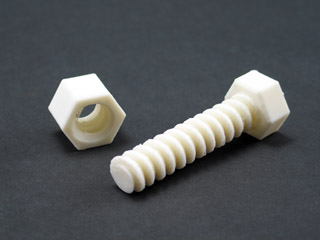Printing a Refrigerator Rail Clip Replacement
Although most of my novice experiments in 3D-printing have been just that, experiments intended to familiarize myself with the technology and its benefits and limitations, I have already had the opportunity to design and print something actually useful. Like most refrigerators, mine has storage areas on the door where items are secured by a removable or adjustable rail, keeping the mustard from flying when you yank the door open. These rails are hollow aluminum sections that accept plastic friction-fitted end caps, which in turn have hooks that engage slots on the door. One of the hooks broke off and naturally fell inside the door, so fixing it with glue was out of the question.

Original right-hand end cap with missing hook, next to intact left-hand end cap
